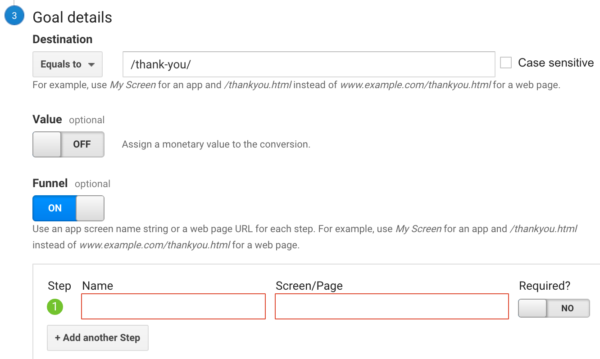What Data Is Google Analytics Goals Unable to Track: Important Details
What Data Is Google Analytics Goals Unable to Track: Important Details
Blog Article
Unveiling the Blind Spots: Understanding What Google Analytics Goals Can not Measure
In the world of digital analytics, Google Analytics stands as a powerful device for tracking and assessing on the internet user communications. Comprehending what Google Analytics goals can not gauge is important for gaining a thorough view of customer habits and engagement.
Customer Actions on External Operatings Systems
Comprehending how customers engage on external platforms is essential for maximizing on the internet strategies. Outside platforms, such as social media sites networks, referral web sites, and online discussion forums, play a significant function in driving website traffic to a business's website. By examining user habits on these systems, businesses can acquire valuable insights into the performance of their advertising initiatives and the choices of their target audience.
One key aspect of user habits on exterior systems is the recommendation resource. By tracking where the customers are coming from, companies can recognize which systems are driving one of the most traffic to their site. This info can assist firms allocate their resources better, concentrating on the systems that generate the most effective results.

Offline Conversions and Communications
Examining individual habits on outside platforms offers important insights right into on-line approaches; nonetheless, taking into consideration offline conversions and communications is similarly necessary for a thorough understanding of a firm's general performance. While Google Analytics excels at tracking on-line communications, it falls short in recording the total client journey that usually consists of offline touchpoints. Offline conversions, such as in-store acquisitions or phone inquiries, play a significant duty in lots of services' success. Disregarding these communications can lead to a distorted sight of the efficiency of marketing campaigns and total business performance.

Acknowledgment Beyond Last Click
When diving into the realm of digital advertising analytics, it comes to be necessary to look beyond the single touchpoint of the last click for a much more thorough understanding of acknowledgment. While Google Analytics provides important insights into individual actions, counting only on last-click acknowledgment can be limiting - what data is google analytics goals unable to track. Attribution models that go beyond the last click provide a much more nuanced view of the client journey, taking into account all the touchpoints that cause a conversion
Acknowledgment beyond the last click allows marketing professionals to designate credit to numerous communications along the conversion path, giving a clearer image of the efficiency of different marketing networks. By discovering multi-touch acknowledgment designs such as linear, time degeneration, or position-based acknowledgment, businesses can better allocate their advertising and marketing budgets and maximize their methods for maximum impact.
Recognizing the influence of each touchpoint in the conversion process is critical for try this making educated decisions and making the most of ROI. By embracing acknowledgment beyond the last click, organizations can acquire deeper understandings into client behavior and customize their marketing initiatives better.
Cross-Device and Cross-Browser Tracking

Similarly, cross-browser tracking complements cross-device tracking by catching customer actions as they switch between different web browsers. Recognizing just how customers interact with sites on different internet browsers can aid marketers enhance their on the internet experiences to make sure uniformity and capability throughout various platforms.
Qualitative Data and Individual Intent
Comprehending individual intent via qualitative information evaluation is essential for establishing targeted electronic advertising and marketing strategies that reverberate with the needs and preferences of the target market. Qualitative data provides understandings into the 'why' behind user activities, shedding light on motivations, feelings, and preferences that quantitative data alone can not capture. By analyzing customer responses, remarks, and interactions, online marketers can uncover valuable details concerning individual intent, allowing them to customize their messaging, material, and offerings to better align with what their target market is seeking.
Qualitative data additionally assists in understanding the context in which customers involve with a site or app. This contextual understanding makes it possible for marketing professionals to create even more relevant and tailored experiences, eventually driving higher interaction and conversion rates. By diving into customer intent with qualitative data evaluation, businesses can obtain a deeper understanding of their target market, causing more reliable advertising techniques that meet customers' requirements and expectations.
Final Thought
Finally, Google Analytics objectives have limitations in gauging user habits on external platforms, offline conversions, attribution past last click, cross-browser and cross-device tracking, and qualitative information related to customer intent. what data is google analytics goals unable to track. It is necessary for businesses to be mindful of these unseen areas in order to supplement their information evaluation with other devices and techniques to obtain a look at more info more detailed understanding of their target market and improve their overall digital advertising and marketing strategies
By evaluating customer actions on these platforms, companies can get beneficial insights into the efficiency of their advertising initiatives and the choices of their target audience.
Evaluating individual actions on exterior systems provides important insights into on the internet methods; nonetheless, taking into consideration offline conversions and communications is equally essential for a detailed understanding of a firm's total performance.In digital advertising analytics, relocating past last-click attribution to explore cross-device and cross-browser monitoring is vital for obtaining a holistic understanding of user interactions throughout different systems and tools. By analyzing user responses, comments, and interactions, marketing professionals can discover important info about user intent, permitting them to customize their messaging, material, and offerings to better straighten with what their target market is seeking.
By delving right into customer intent with qualitative data analysis, businesses can gain a much deeper understanding of their target audience, leading to a lot more efficient advertising techniques that meet customers' demands and expectations.
Report this page